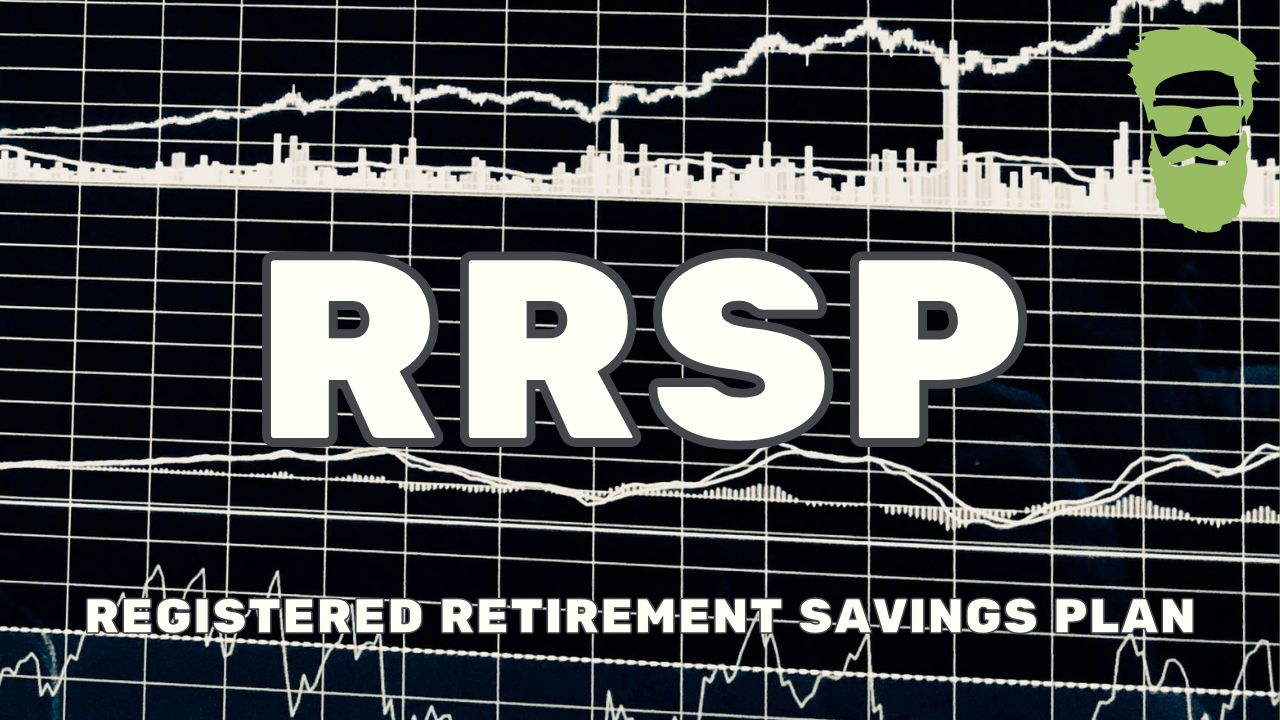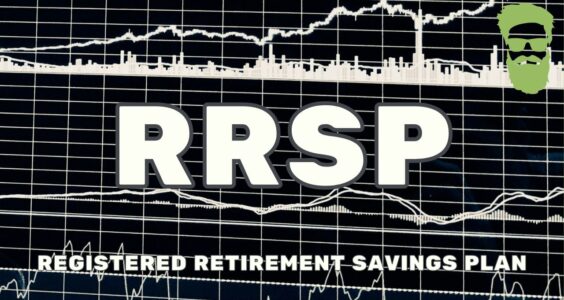The Registered Retirement Savings Plan (RRSP) is a registered Canadian investment plan that you can contribute to for retirement purposes over the course of your working life. When you, your spouse, or your common-law partner contribute money to a RRSP, your funds are exempt from being taxed in the year you make the contribution.
RRSP Contribution Limit
The RRSP contribution limit is 18% of the income you earned in the previous year during 2023 up to a maximum of $30,780 by the March 1, 2024 deadline. The contribution limit was $29,210 in 2022 and will be $31,560 in 2024. You can carry forward the RRSP contribution room that you are unable to use in any particular year.
RRSP Deduction Limit
You can find your RRSP deduction limit by going to Form T1028. You must pay a tax of 1% per month on your contributions that exceed your RRSP deduction limit by more than $2,000. This is especially beneficial if saved for your last working year before retirement. Most Canadians are in a lower tax bracket the following year. You cannot claim a deduction for amounts you pay for administration services for an RRSP. Brokerage fees are charged to buy and sell within a trusted RRSP. The interest you paid on money you borrowed to contribute. Deduct your contributions on line 20800 of your tax return.
Home Buyers Plan (HBP)
The Home Buyers’ Plan (HBP) is a program that allows you to withdraw from your RRSP to buy or build a qualifying home. The withdrawal limit is up to $35,000 and can be used for yourself or a related person with a disability. You have up to 15 years to repay the amounts you withdrew from your RRSP under the HBP. Your repayment period starts the second year after the year when you first withdrew funds. If you withdraw funds in 2020, your first year of repayment will be 2022. You can repay the full amount at any time. Your Home Buyers Plan account balance by going to your Government of Canada: My Account.
Lifelong Learning Plan (LLP)
The Lifelong Learning Plan (LLP) allows you to withdraw up to $10,000 in a calendar year from your RRSP to finance full-time training or education. Withdrawals can be used for you, your spouse, or your common-law partner. You cannot participate in the LLP to finance your children’s training or education.
What if I Withdraw from My RRSP?
When you withdraw funds from an RRSP, your financial institution withholds the tax. The rates depend on your residency and the amount you withdraw. For residents of Canada, the rates are:
- 10% on amounts up to $5,000
- 20% on amounts over $5,000 up to and including $15,000
- 30% on amounts over $15,000
Death & Taxes
For many Canadians, the largest tax liability their estate will face is the potential tax on RRSPs. The Income Tax Act (Canada) (ITA) states that, unless certain conditions are met, the deceased’s terminal return must report as income the fair market value of his or her RRSP on the date of death. Tax will be payable at the deceased annuitant’s marginal rate for the year of death unless this income inclusion can be avoided by using one of the strategies discussed below.
Spouse or Common-Law Partner as Beneficiary
When an RRSP account is set up, the annuitant may designate a beneficiary of the RRSP. The beneficiary designation can be made on the RRSP account or through a declaration in the deceased’s Will. If a spouse or common-law partner is the named beneficiary, the value of the registered plan at death qualifies as a refund of premiums. This refund of premiums may not be taxed in the hands of the deceased annuitant; rather, it can be taxed to the surviving spouse or common- law partner, who could choose to transfer the amount directly to his or her RRSP, Registered Retirement Income Fund (RRIF), specified pension plan (SPP), pooled registered pension plan (PRPP) or to an issuer to purchase an eligible annuity and claim a deduction equal to the amount of the refund of premiums. The spouse or common-law partner beneficiary does not require RRSP contribution room to complete the transfer of the refund of premiums. As such, a part of or the entire amount of refund of premiums would continue to remain tax-deferred until the amounts are withdrawn or upon death of the spouse beneficiary.
Child or Grandchild as Beneficiary
If the beneficiary of the RRSP is a child or grandchild, the proceeds of the RRSP still qualify as a refund of premiums so long as the child or grandchild is financially dependent on the deceased annuitant. A child or grandchild of a deceased annuitant is generally considered financially dependent on that annuitant at the time of death if, before that person’s death, the child or grandchild ordinarily resided with and was dependent on the annuitant and the child or grandchild meets one of the following conditions:
- The child or grandchild’s net income for the previous year on line 23600 of their income tax return was less than the basic personal amount on line 30000 of Schedule 1 for that previous year
- The child or grandchild is impaired in physical or mental functions, and his or her net income for the previous year was equal to or less than the basic personal amount plus the disability amount on line 31600 of Schedule 1 for that previous year
The two conditions are further explained below.
If the child or grandchild is an adult and was financially dependent on the deceased but not physically or mentally (i.e., satisfies condition 1 only), no tax deferral is possible. However, an income redistribution is possible from the deceased to the financially dependent adult child or grandchild, having the income potentially taxed at a lower marginal tax rate.
If the child or grandchild is a minor and was financially dependent on the deceased annuitant but not physically or mentally infirm (i.e., satisfies condition 1 only), an income redistribution and tax deferral is possible by using the RRSP proceeds to purchase an annuity that must end by the time the child or grandchild reaches the age of 18. The child or grandchild is taxed on the annuity payments as they are received in each year. This strategy has the effect of spreading the tax on RRSP proceeds over several years, allowing the child or grandchild to take advantage of personal tax credits and graduated marginal tax rates, each year until he or she reaches the age of 18.
If the child or grandchild was financially dependent on the deceased annuitant (regardless of age) by reason of physical or mental infirmity (i.e., satisfies condition 2 above), then the amount that qualifies as a refund of premiums may be rolled over into the child’s or grandchild’s RRSP, RRIF, SPP, PRPP or to an issuer to purchase an eligible annuity. This strategy reduces the income of the deceased with a tax-deferred rollover to the infirmed child or grandchild, without requiring a fixed-term annuity to be purchased.
In all the above situations, the refund of premiums could be taxed in the hands of the child or grandchild and not the deceased annuitant. To facilitate the redistribution of income from the deceased to the child or grandchild, the deceased annuitant’s legal representative needs to fill out Chart 2 in CRA Information Sheet RC4177, Death of an RRSP Annuitant. This redistribution allows the deceased annuitant and beneficiary to pay the least amount of tax the law allows.
In all other situations, if the children were not financially dependent on the deceased, the entire value of the RRSP would be taxable on the deceased annuitant’s terminal return.
Joint & Several Liability
Generally, the tax liability arising out of the deceased annuitant’s terminal tax return is the responsibility of the deceased annuitant’s estate. Where an RRSP annuitant dies, section 160.2 the ITA provides that the recipient (i.e., a beneficiary) of an amount out of or under an RRSP is jointly and severally liable with the deceased annuitant for a portion of the deceased’s additional tax payable that arose because the RRSP amount was included in the deceased’s income. Therefore, if the deceased’s estate is insolvent, or does not fulfill the tax liability resulting from the deemed income inclusion upon death of the RRSP annuitant, the CRA has the discretion to pursue an RRSP beneficiary for any taxes owing by the deceased annuitant relating to this tax liability. This joint and several liability is equal to the proportion of such additional tax attached to the RRSP payment received by the beneficiary. An annuitant of an RRSP may want to ensure that the estate has sufficient liquidity to pay any resulting income tax associated with the deemed income inclusion of an RRSP at his or her death in order to protect a non-spouse beneficiary’s entitlement to the entire amount of the RRSP funds. Similar provisions apply to amounts received through a distribution of RRIF proceeds upon the death of a RRIF annuitant.
Estate as Beneficiary
Sometimes an RRSP annuitant will name his or her estate as the beneficiary of the plan. In this case, where an amount is paid from an RRSP to the estate for the benefit of either the spouse or common-law partner, or a financially dependent child or grandchild (assuming they were beneficiaries under the Will), the legal representative of the estate, along with the beneficiary, can file a joint election with the Canada Revenue Agency (CRA) through CRA Form T2019, Death of an RRSP Annuitant – Refund of Premiums, to treat the amount as though it was transferred directly to the spouse or common-law partner, or child from the RRSP. In this case, the same refund of premiums treatment can be obtained.
Rollover to a Registered Disability Savings Plan (RDSP)
Since July 1, 2011, a beneficiary of an RRSP who is a financially dependent child or grandchild that also have a physical or mental infirmity can roll over the proceeds to a Registered Disability Savings Plan (RDSP) tax-free. These rollovers cannot exceed the maximum RDSP contribution room of $200,000 and will also reduce the room by the amount transferred. Government grants will not be paid into the RDSP on funds rolled over in these scenarios.
RRSP Losses After Death
As mentioned earlier, the FMV of RRSP investments is generally included in the deceased annuitant’s income in the year of death.
A subsequent increase in investment value is generally included in the income of the RRSP beneficiaries upon distribution. Until the 2009 Federal Budget, there was no income tax provision to recognize a decrease in the value of RRSP investments occurring after death and before distribution to beneficiaries.
Presently, for final distribution from a deceased annuitant’s RRSP occurring after 2008, post-death decreases in value may be carried back and deducted against income on the deceased’s terminal tax return. The amount will generally be calculated as the difference between the year-of-death RRSP income inclusion and the total of all amounts paid out of the RRSP after the death of the annuitant.




